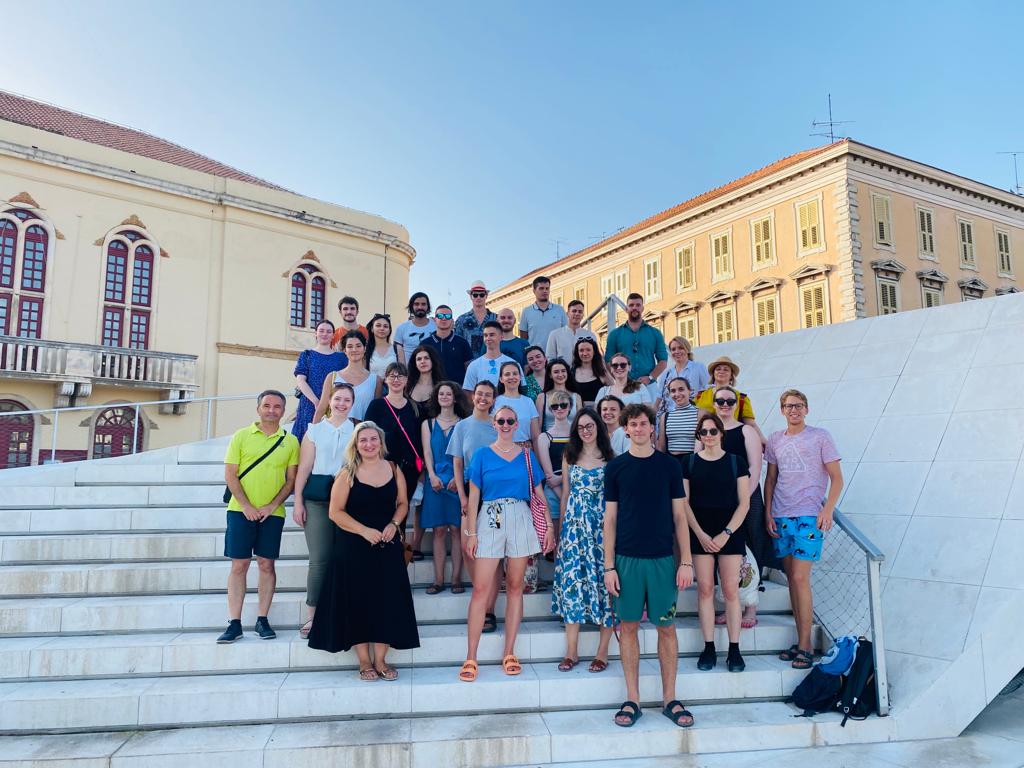Summer School for Youth: Interdisciplinary Environment for Developing Transport-Spatial Solutions in Šibenik
From 17 to 21 July 2023, the summer school organised by EUKI project partner ODRAZ was held at the campus of St. Ivan’s Fortress in Šibenik, Croatia. The school brought together 26 young professionals and students from various fields such as civil engineering, geography, architecture, sociology, landscape architecture, transportation, economics, and geodesy from all over Croatia to focus on the theme „Planning Cities of the Future.“ On the last day of the summer school, a public presentation of the solutions developed with the support of mentors was held for five selected topics related to Šibenik’s transportation and spatial issues.

The aim of ODRAZ’s summer school was to provide young individuals with the opportunity for extracurricular education and work in small interdisciplinary groups on proposed transport-spatial topics or challenges defined in collaboration with the City of Šibenik. The emphasis was on transport-spatial planning and participatory processes in urban planning. According to the participants‘ feedback, the interdisciplinary approach, main aspect of the school, proved to be the most significant one.
The summer school began with the introductory lectures by the mentors, which covered methodological frameworks to assist the participants throughout the school, examples of good practices in multimodal terminals, green bus stops, green buildings, the importance of participation in spatial planning, and an introduction to Placemaking and the Place Game tool. Subsequently, the participants were divided into interdisciplinary teams and selected their respective topics.
The topics the participants worked on were as follows:
- The Coast as a Space for Meetings and Living
- Ferry Port – The Green Heart of a Multimodal Terminal
- Spatial Interventions for Climate Sustainability in Mobility – Stjepan Radić Street
- Streets for People – Kamenarska Street
- Promoting Sustainable Mobility among Students and Youth in Šibenik
On the second day, each group defined their methodology and work plan, including field visits and conducting questionnaires and semi-structured interviews with citizens. The quality of the work plan contributed to the development of high-quality solutions. The rest of the day was spent by the participants working in their groups, gathering necessary literature and data, and preparing for the field visits. At the end of the day, the participants took part in a professional tour of Šibenik.
On the third and fourth days, the participants refined their ideas and improved their solutions. They then presented their progress and proposed solutions, receiving feedback and advice from mentors. After reviewing the solutions and suggestions, the young participants prepared their presentations and conceptual ideas, which they presented on Friday, July 21, during the roundtable discussion.
Throughout the school, the importance of participatory processes in urban planning was emphasized, aiming to ensure that decisions and solutions align with citizens‘ needs and are ultimately accepted. Additionally, there was a focus on developing solutions that contribute to the climate resilience of Mediterranean cities by reducing the impact of heatwaves and preventing heat islands, as well as achieving climate neutrality by reducing greenhouse gas emissions.
Not only did the participants learn during the summer school, but their presentations and solutions can also serve as learning material. They offer insights into the possibilities of replicating these solutions in other Mediterranean cities, as well as the specific advantages such solutions offer for Šibenik.
One of the most important conclusions from the school is that in the planning of public spaces, we are not creating new spaces for people, but rather returning them to the people by considering the potential of that space and emphasizing the active involvement of the local community.
Some of the highlighted benefits of such solutions during the summer school were:
- Improved quality of life for Šibenik residents
- Transformation of the city into a people-oriented place
- Encouragement of public transport use and active mobility
- Enhanced health and general well-being
- Revitalization of neighborhoods
- Reduction of the impact of heatwaves and heat islands
- Reduced impact of tourism seasonality
- Climate resilience and sustainability
- The importance of participatory and interdisciplinary approaches
- Promotion of Šibenik as a climate-neutral city
